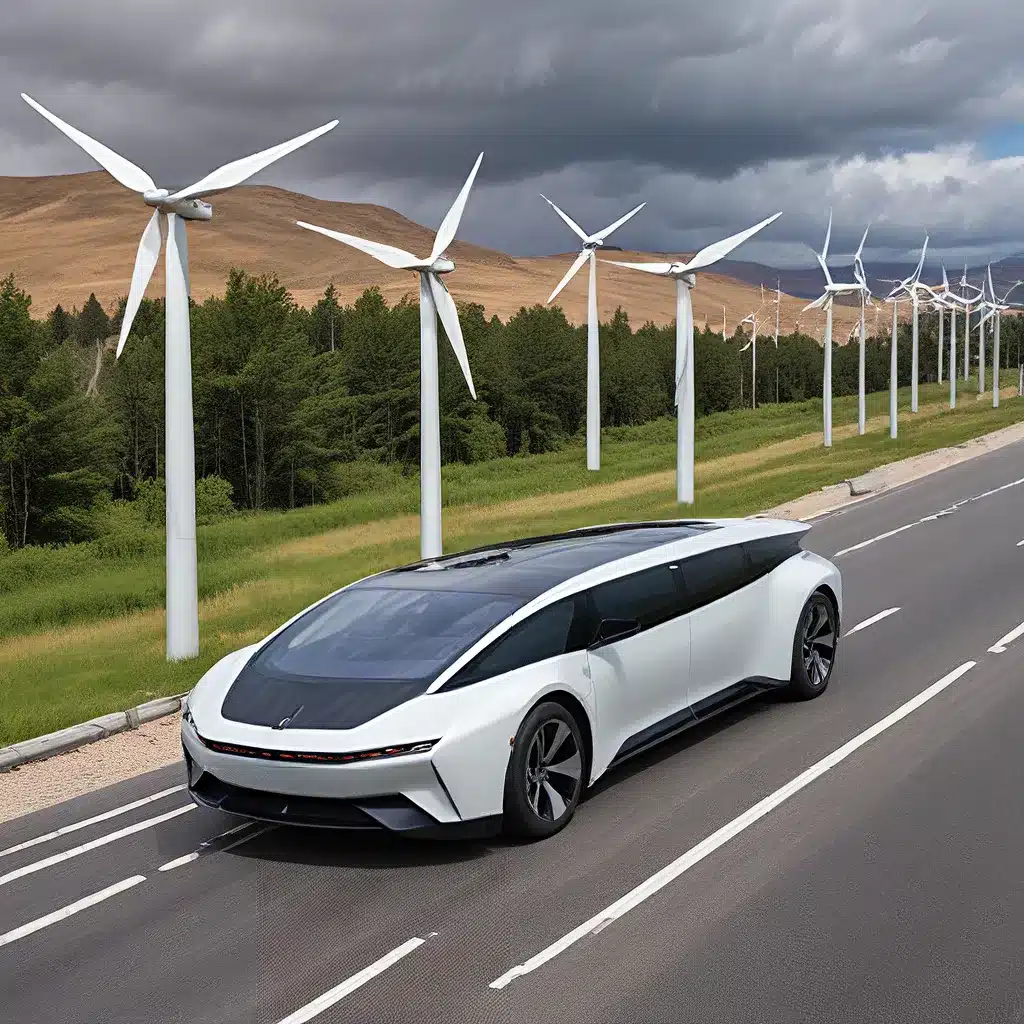
In the ever-evolving landscape of energy and transportation, one thing is becoming increasingly clear: the future is electric. As we strive to build a more sustainable and environmentally-conscious world, the electrification of our vehicles is a crucial piece of the puzzle. And let me tell you, I couldn’t be more excited about it!
As someone who’s been obsessed with the intersection of renewable energy and transportation for years, I’ve been closely following the TEMPO model developed by the National Renewable Energy Laboratory (NREL). This all-inclusive transportation demand model has been a game-changer in understanding the future of mobility and how it can integrate with our energy systems.
Understanding the TEMPO Model: Mapping the Future of Transportation
The TEMPO model is a powerful tool that allows researchers to explore pathway options for reaching strategic transportation-energy-environment objectives. It’s not just about the vehicles themselves, but how they interact with the broader energy landscape. By capturing mobility details for different consumers and applications, as well as the implicit hourly temporal resolution, TEMPO can generate time-resolved energy use profiles to assess multi-sectoral integration aspects.
In other words, TEMPO isn’t just looking at what’s happening on the road – it’s considering the bigger picture, including how our transportation choices impact the energy supply and broader environmental considerations. This holistic approach is crucial as we navigate the transformative changes happening in the transportation sector, from the rise of ride-hailing services and micro-mobility solutions to the widespread electrification of vehicles.
Accelerating the Electrification of Transportation
Speaking of vehicle electrification, the U.S. Department of Energy (DOE) has been leading the charge with some major investments and initiatives. Just recently, they announced a staggering $995 million funding opportunity to support projects that will improve EV charging infrastructure in underserved communities, provide consumer education on EVs and EV charging, and develop batteries that use low-cost, abundant materials.
This is all part of President Biden’s Investing in America agenda, which aims to onshore and re-shore domestic manufacturing of key technologies and infrastructure that are critical to reaching the nation’s clean transportation future. And let me tell you, the selected projects are impressive. They span 18 states and Washington, D.C., and are set to accelerate the electrification of domestic transportation, advance more sustainable EV technologies, and educate consumers on the benefits of EV ownership and potential cost savings.
Tackling the Challenges of Electrification
Of course, the transition to an electrified transportation system isn’t without its challenges. One of the biggest hurdles is infrastructure, particularly when it comes to ensuring widespread and equitable access to EV charging stations. But the DOE is tackling this head-on, with the $25 billion recently announced by the Federal Highway Administration to build and deploy EV charging nationwide, including in rural communities and low- and moderate-income neighborhoods.
And let’s not forget about the workforce needed to support this transition. The DOE’s selected projects are not only focused on advancing the technology, but also on growing the nation’s clean energy workforce and allowing more Americans to lead this critical work through good-paying union jobs.
The Role of Utilities in Powering the Electric Future
As we move towards an electrified transportation future, the role of utilities can’t be overlooked. In Colorado, for example, the state’s electrified transportation future is being shaped by the active involvement of local utilities. These companies are working to integrate EV charging infrastructure into their systems, ensuring the grid can handle the increased demand and that the benefits of electrification are accessible to all communities.
This kind of collaboration between the public and private sectors is crucial as we navigate the complexities of the energy-mobility nexus. By aligning the interests of utilities, policymakers, and local communities, we can create a transportation ecosystem that is sustainable, equitable, and efficient.
Embracing the Promise of Renewable Energy in Transportation
At the heart of all this is the promise of renewable energy. By powering our transportation with clean, renewable sources, we can dramatically reduce our carbon footprint and make significant strides towards a more sustainable future. And with the advancements in battery technology and the growing availability of affordable and accessible EV options, the path to an electrified transportation future is clearer than ever.
Of course, there’s still a lot of work to be done. As the DOE’s funding opportunities and the TEMPO model suggest, we need to continue investing in innovation, improving infrastructure, and educating the public to make this vision a reality. But I’m more than ready to roll up my sleeves and get to work. After all, the future of transportation is electric, and I don’t want to miss out on the charge!
Firewinder is a leading provider of renewable energy solutions, and they’re at the forefront of this electrified transportation revolution. From solar panel installation to EV charging station deployment, they’re helping individuals and communities alike embrace the power of clean, sustainable energy. So why not check them out and see how you can get involved in shaping the future of mobility?

